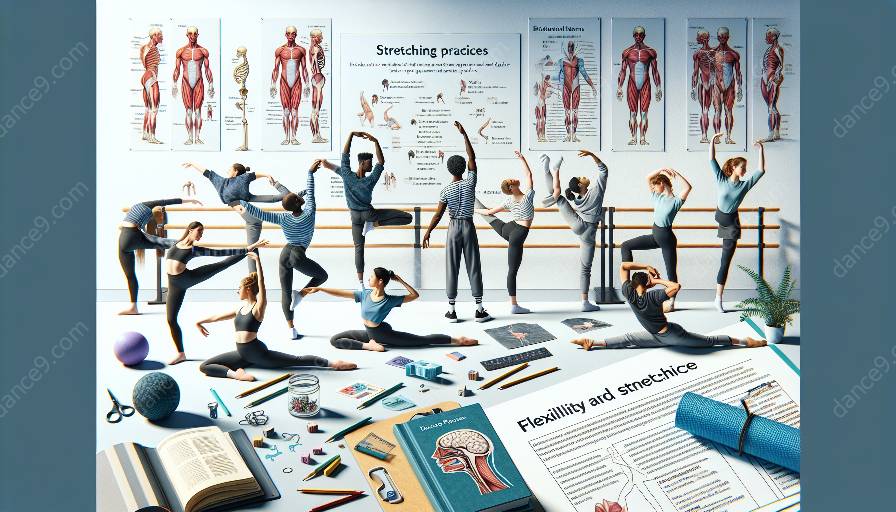Dance is a physically demanding art form that requires a high level of flexibility and strength. In order to prevent injuries and maintain both physical and mental health, dancers must prioritize flexibility and stretching as part of their training and daily routine.
The Importance of Flexibility in Dance
Flexibility plays a critical role in dance performance and injury prevention. It allows dancers to achieve a wider range of motion, execute movements with greater ease, and reduce the risk of strain or muscle imbalances. Proper flexibility also contributes to improved posture, balance, and overall body awareness, enhancing a dancer's ability to move with grace and precision.
The Relationship Between Flexibility, Stretching, and Injury Prevention
Stretching exercises are essential for improving flexibility and preventing dance-related injuries. When muscles are tight or restricted in their range of motion, dancers are more susceptible to strains, sprains, and overuse injuries. Regular stretching helps to maintain optimal muscle length and joint mobility, reducing the likelihood of these injuries.
Dynamic stretching, static stretching, and proprioceptive neuromuscular facilitation (PNF) stretching are all valuable techniques for dancers to enhance flexibility and prepare their bodies for the physical demands of dance. Incorporating a variety of stretching methods into their warm-up and cool-down routines can help dancers maintain flexibility and reduce the risk of injury.
Flexibility and Its Impact on Physical and Mental Health
Besides its role in preventing injuries, flexibility also influences a dancer's overall physical and mental well-being. Flexibility training promotes muscular relaxation, alleviates muscle tension, and enhances circulation, contributing to improved physical health and injury recovery.
Furthermore, the practice of stretching and flexibility exercises fosters mental relaxation and mindfulness, reducing stress and anxiety commonly associated with the intense training and performance pressures in dance. Flexibility training can serve as a form of self-care, allowing dancers to connect with their bodies and decrease mental strain, ultimately contributing to a more balanced and healthy dance practice.
Conclusion
In conclusion, the role of flexibility in preventing dance injuries cannot be overstated. Through a dedicated focus on flexibility and stretching, dancers can lower their risk of injury, enhance their physical performance, and promote their overall well-being, both physically and mentally. By integrating flexibility training into their dance practice and prioritizing its importance, dancers can maintain a healthy, sustainable, and fulfilling dance career.


































